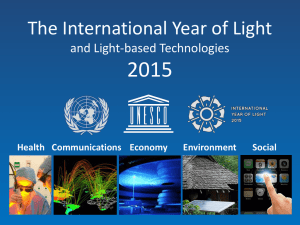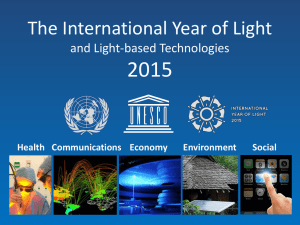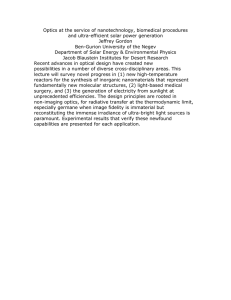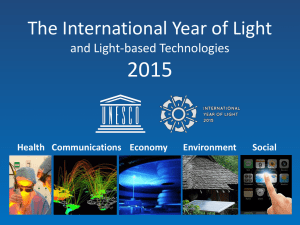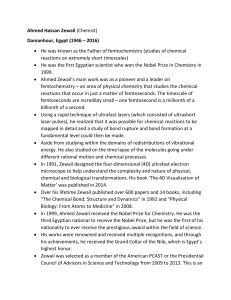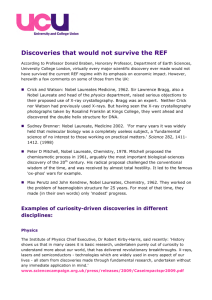The International Year of Light and Light
advertisement
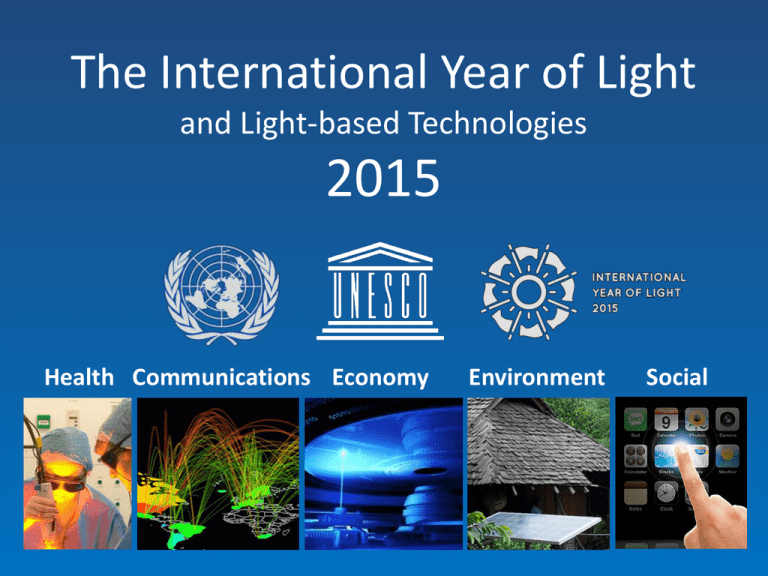
The International Year of Light and Light-based Technologies 2015 Health Communications Economy Environment Social International Year of Light International Year of Light Stressing that enhanced global awareness of and increased education in the science and technologies of light are vital for addressing challenges such as sustainable development, energy and community health, as well as for improving the quality of life in both developed and developing countries Considering that the applications of light science and technology are vital for existing and future advances in medicine, energy, information and communications, fibre optics, astronomy, architecture, archaeology, entertainment, art and culture, and that light-based technologies contribute to the fulfilment of internationally agreed development goals, including by providing access to information and increasing societal health and well-being Considering also that technology and design can play an important role in the achievement of greater energy efficiency, in particular by limiting energy waste, and in the reduction of light pollution What the UN wants To promote light technologies for improved quality of life in developed and developing world To reduce light pollution and energy waste To promote women’s empowerment in science To promote education amongst young people To promote sustainable development Potential is very broad Origin of Life Healthcare Communications & GPS Optical Instruments The Universe Potential is very broad Cultural Heritage Education for All Nature Light and Art Light pollution, technology Smart lighting can both highlight culture and reduce light pollution Optical technologies give new impetus - from art to archaeology Addressing global challenges Light technologies provide solutions to challenges in energy & climate change Focus on development Internet use by population 75% in Europe 16% in Africa Study after sunset is not possible in many developing countries Endorsement “Light gives us life through photosynthesis, lets us see back in time towards that cosmic big bang, and helps us communicate with the other sentient beings here on Earth. The optics and photonics technologies developed for space exploration have rendered many valuable spin-off applications in everyday life.” John Maher (Nobel Prize 2006) Civilization would not exist without light; light from our Sun and light from the focused and coherent lasers which now have become an important part of our daily lives. The International Year of Light will surely raise awareness of these powerful discoveries and their present wide-ranging, light-based technologies which are significant contributors to the world market. As importantly, the International Year of Light will inspire future discoveries and applications for one of the most important element of our existence: light. Ahmed Zewail (Nobel Prize 1999) Science base Partnership Education Linking new communities Outreach to the public and decision makers Direct benefit to society in developing and developed countries High profile events throughout 2015 IYL Opening Ceremony 19-20 January 2015, 1500 attendees, global webcast Nobel laureates Scientists Diplomats Industry Leaders Politicians UNESCO Programme Leaders This is like nothing we have ever done before In 2009, the International Year of Astronomy reached 815 million people in 148 nations We can do even better in 2015 The International Year of Light and Light-based Technologies 2015 We will only get one chance
